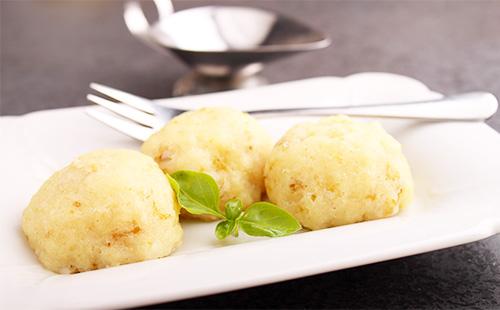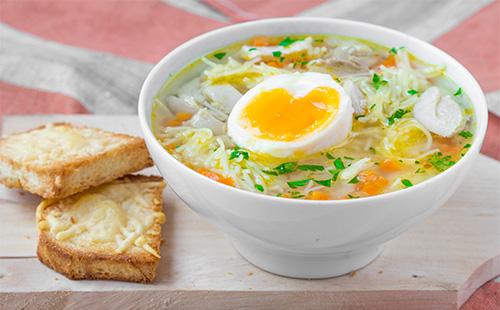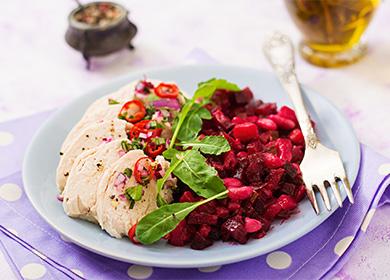The content of the article
The intestines can be called one of the most sensitive organs. His work is affected not only by the general state of health, but also by the quality, quantity and chemical composition of the food consumed. In addition, the lower gastrointestinal tract (GIT) is sensitive to changes in the psychoemotional state of a person, responding to stress with acute constipation or sudden onset of diarrhea. Diarrhea indicates a discord in the work of the digestive tract, and the purpose of appointing the fourth table is to eliminate the resulting dissonance and its causes.
Who is assigned treatment table number 4
Problems with the intestines can be infectious, autoimmune, and can occur due to diseases of other digestive organs. The result of all these processes is inflammation of the mucous membranes of the small, large intestine, as well as the sigmoid and rectum. Often, the inflammatory process leads to impaired absorption in the intestinal lumen and increased motility. As a result, severe diarrhea develops. Indications diet number 4:
- enterocolitis;
- colitis;
- gastroenterocolitis;
- acute intestinal infections;
- postoperative period after manipulation of the intestine.
A general indication for the use of the diet for all of these pathologies is profuse diarrhea. This is a very frequent discharge of a copious amount of watery feces.
The peculiarity is that this treatment table can be used in the acute and subacute phases of the pathological process, in the chronic course of the disease, during the recovery period, as well as when returning to the standard diet. In addition, a special diet is used during a clear manifestation of dyspeptic disorders. The prescription of the diet is not prohibited if the patient has concomitant digestive tract pathologies:
- stomach diseases;
- pancreas;
- liver
- gallbladder.
Due to the variety of problems that can occur with the intestines, diet No. 4 (table No. 4) has undergone adjustments. To meet the specific needs of patients of the gastroenterological department, its subspecies have been developed.
Action on the body
If the inflammatory process affects the mucous membranes of the digestive tract, then additional irritation with their rough, fibrous and indigestible food only leads to an aggravation of the situation. The purpose of the appointment of treatment table No. 4 is to provide maximum peace for inflamed mucous membranes. This will require:
- eliminate mechanical irritants - coarse dietary fiber, hard dry crusts, large pieces of vegetables, fruits, other food;
- eliminate thermal irritants- hot and cold food, drinks;
- prevent chemical irritation- for example, carbonated drink, alcohol, organic acids;
- prevent putrefactive and fermentation processes- have to abandon starchy and indigestible food;
- provide complete digestion- it is necessary to exclude the ingestion of undigested food particles into the intestine;
- prevent excessive secretion- you can not allow jumps in the acidity of gastric juice, stimulation of the release of pancreatic juice, bile;
- help restore intestinal mucosa- you will need to organize a diet with a sufficient amount of enveloping and protein substances.
The fourth table allows you to remove inflammation from the mucous membranes, restore physiological motility and the absorption capacity of the intestines. With a sparing approach to nutrition, the load on other digestive organs is reduced, which allows you to adjust their work as well. Eating the right foods favors the restoration of intestinal microflora.
General power characteristics
A specific fourth diet implies a decrease in the amount of fats and carbohydrate foods in the diet. This is done in order to reduce the secretion and fermentation processes in the intestine, to provide optimal conditions for the restoration of the state and functioning of the mucosa.
The diet should not contain sweets, legumes, sources of coarse fibers, hot and sour sauces, dairy products. That is, everything that stimulates the secretion of juices, requires a copious amount of enzymes for digestion, and irritates the intestinal walls by mechanical action. This happens when fiber swells and gas is released during fermentation.
Preferred types of cooking are steaming and cooking. Food should be crushed to a liquid, puree state, which will ensure its fastest and most complete assimilation. It will also prevent the passage of unsplit food particles into the intestines. Contraindications to the diet include stimulants of bile secretion - acidic foods, vegetable fats.
The chemical composition of the daily diet with a medical diet No. 4:
- vegetable protein - 35 g;
- animal protein - 65 g;
- vegetable fat - 25 g;
- animal fat - 45 g;
- carbohydrates - 250 g;
- salt - 6-8 g.
The recommended calorie intake for an adult is 2000 kcal. The energy value of products per day can be reduced in accordance with the age, state of health and energy needs of the patient. It is important to observe the proportions of proteins, fats and carbohydrates (BJU). A special diet for bedridden patients, elderly patients and children must be agreed with the doctor.
Subject to a special meal plan, meals with a small serving volume are preferred. Fractional diet is recommended - up to six times a day. You need to eat strictly at the same time. At the same time, it is important to drink the required minimum of water - 1.5 l - in order to avoid dehydration and concentration of digestive juices.
Prohibited Products
The fourth table refers to strictly limited and low-calorie food systems. He puts a taboo on all snacks, sweets, pickles, smoked meats. The list of what you can’t eat on diet No. 4 is quite impressive:
- first meal - It is forbidden to use strong broths from fatty meats, soups containing cereals and vegetables, dishes with noodles, borsch;
- bakery products- limited to crackers from first-class bread, everything else is impossible;
- meat and fish products- you should abandon excessively fatty varieties of meat, offal, sausages, canned food, everything that is prepared in whole
- dairy products and eggs- the ban includes almost all milk-based products fried with a crust, raw, hard-boiled eggs;
- cereals - prohibited use millet, barley, pearl barley, pasta and legumes;
- vegetables and fruits - all raw and unprocessed fruits and vegetables are excluded from the diet;
- the drinks - Do not allow carbonated drinks of low temperature, hot drinks diluted with milk.
What to eat
Despite the large number of restrictions, the patient will not remain hungry. The list of what you can eat on diet No. 4 can also be called an extensive. You can get acquainted with it in more detail in the table of products offered for use as part of diet table No. 4.
Table - Approved foods on diet No. 4
| Product Category | Dishes | Cooking features | Frequency of use |
|---|---|---|---|
| First meal | Mucous soups with grated meat or steamed ground meatballs | - Prepare on the third broth from lean fish or meat; - add a decoction of rice or semolina; - add a decoction of vegetables | Daily at lunchtime |
| Bread | Rusks, prepared for a day from 200 g of wheat bread of the first grade | - A piece of bread is cut into thin slices; - dried in the oven, without roasting or browning | Daily |
| Meat | - chicken; - rabbit; - turkey; - veal without tendons and ligaments | - Prepare the minced meat, previously removing all hard parts and peel; - prepare meatballs or meatballs with the addition of boiled rice; - soufflé is made from boiled meat | Daily |
| A fish | Any river or marine low-fat | - Steamed or boiled in a piece; - prepare minced fish; - cook fish souffle | Few times a week |
| Dairy products, eggs | - Only fresh cottage cheese; - a pair of eggs per day | - Cottage cheese is used only in grated form or after cooking a steam souffle; - boiled soft-boiled eggs; - prepare a steam omelet | 1 time in 1-2 days |
| Vegetables and fruits | - Only vegetable broth from all vegetables; - currant; - dogwood; - quince; - pear; - apples (only they can be eaten raw) | - From fruit prepare jelly or jelly; - the apple is ground into a homogeneous puree before consumption | Daily |
Of the fat diet, only butter is allowed. It is used in an amount of 5 g, adding to the finished dish immediately before use. From drinks, the diet includes green tea, black coffee, cocoa on the water. Everything should be moderately strong.
Recommended products also include fruit juices, which are squeezed before consumption and diluted with water (with the exception of plum, apricot and grape juices). The main recipe for preparing any dishes is grinding the product until a homogeneous substance is obtained. Ideal soufflé and mashed potatoes.

Varieties of the fourth menu
Under various scenarios of the development of intestinal pathology, it may be necessary to observe one of the specific therapeutic diets that table No. 4 unites.
Fermentation elimination
Diet No. 4a is intended to eliminate fermentation in the intestines with sudden and severe exacerbations of inflammatory diseases. It is a therapeutic nutritional scheme with a reduced calorie content (1600 kcal per day). In this case, there is a decrease in the amount of carbohydrates consumed. Diet menu for the day:
- morning meal - protein omelette semolina on water, weak tea;
- snack - fresh cottage cheese with a high content of calcium (about 100 g per serving);
- lunch - mashed soup on vegetable broth with grated meat, steamed chicken meatballs, blueberry jelly;
- afternoon tea - herbal decoction rosehip broth or bran;
- dinner - steam meatballs, grated buckwheattea;
- before bedtime - a glass of fat-free kefir.
About 30 g of sugar is allowed to be consumed during the day, adding it to drinks or cottage cheese. Also, 200 g of bread crumbs are stretched for the whole day.
Balanced diet
Diet No. 4b is a fourth table option designed for people with stool disorders, chronic and acute bowel diseases, which are accompanied by gastritis, pancreatitis, or liver and gall bladder diseases. The diet is not as limited as in the standard version of the fourth table and can be used for a long time. The liquid and puree consistency of the dishes is preserved. Day menu option:
- breakfast - boiled slices of low-fat fish, mashed potatoes, rice porridge on the water (grated into a homogeneous substance), black tea;
- snack - portion (100 g) of freshly prepared cottage cheese with a high content of calcium;
- dinner- soup with the addition of grated carrots on meat broth, boiled meat with grated buckwheat porridge, jelly from blueberries or apples;
- afternoon tea- steam omelet from egg white, broth on rose hips;
- dinner- well-boiled beef tongue and grated carrot salad, a serving of calcined cottage cheese;
- for the night- a glass of kefir or unsweetened yogurt.

Transition to a familiar diet
Therapeutic diet No. 4c is used after applying diet No. 4b. It is used to smoothly transition to a normal diet or to ensure long-term remission of intestinal diseases. The diet is balanced, includes a standard amount of BZHU, and the total calorie content of the daily diet for an adult is about 3000 kcal. Sample diet menu number 4 in the lite version:
- breakfast - rice porridge in milk, steam omelet, tea with milk or cream;
- snack - increased portion of fresh cottage cheese with a high content of calcium (150 g);
- lunch - cauliflower soup on chicken broth, boiled beef with rice porridge, green apples;
- afternoon tea - boiled rabbit or chicken slices, rosehip broth;
- dinner- meat roll, carrot salad with green peas, cottage cheese pudding, fruits, berries, tea with milk;
- before bedtime- fermented milk product.
A significant difference between diet No. 4v and the standard mode of the fourth table is the absence of the need to prepare mashed potatoes and grind food. It is allowed grinding and high-quality cooking of cereals and light vegetables that do not stimulate the passage of bile. Dairy products and whole milk are also introduced into the diet. The need to dry bread disappears. Now you can eat yesterday’s pastries.
The treatment table number 4 implies many restrictions for the patient.However, their compliance will not be long, since such a nutrition plan is not used for more than five days. Next, the patient will be transferred to a more diverse type of diet, and proper nutrition after treatment will avoid relapse.
Reviews: “The benefits are noticeable from day one”
My child spent a vacation with her grandmother. What a grandmother does not want to please her beloved grandson, and of course it could not do without pies, all kinds of sweets and soda. Upon returning home, the child recited constipation, an extremely unpleasant phenomenon. I turned to a gastroenterologist for advice, he advised me to exclude harmful products, and it is better to follow a diet number 4 for at least 5 days, and then go to 4b, the main thing is that with these diets the child does not remain without yummy, marmalade can be made even if only a little. It took 3 weeks at first of our dietary treatment, the stool in the child returned to normal, it stopped swelling, the tummy was asleep, and the child became more active and cheerful. Watch the nutrition of your children because this is the secret of their health.
Ida, http://aranetta.ru/diets/4-stol.html
Diet number four "A" was prescribed to me in September 2015 by a doctor after poisoning and related intestinal upset. On a sparing diet, there were five days during which the functional function of the gastrointestinal tract was fully restored. The diet and dishes, of course, do not shine with variety, but for the body the benefits are noticeable immediately from the first day. The food is quite light and not plentiful, after the disorder it is well distributed throughout the intestines, on the second day the sounds and rumbling stopped, on the third the stool returned to normal. I will not write in detail about weight loss, since it is difficult to understand how much it took during the illness and recovery on a diet, but I still have not gained three kilograms then.
Taisia Alexandrovna, http://aranetta.ru/diets/4-stol.html

